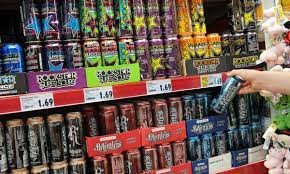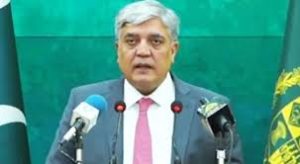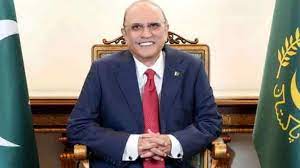Labour considers ban on sale of energy drinks to children

Labour is considering a ban on the sale of energy drinks to children if it wins power in the general election, it has been reported.
The proposal has been put forward for inclusion in the party’s manifesto, according to Sky News, as concern grows about health risks to young people from high-caffeine products.
The ban is not currently Labour policy, a source told the Guardian, and its manifesto commitments will be unveiled closer to the election, expected to take place in the autumn.
A government-commissioned study reported that up to a third of UK children consume at least one energy drink each week.
Popular among young people in particular, millions consume the products, which contain an average caffeine content of 150mg per litre as well as sugar, vitamins, minerals and amino acids.
They are associated with insomnia and poor-quality sleep, according to a large study that suggests that just one can a month raises the risk of disturbed sleep, but are marketed as boosters of mental health and physical performance.
The study, involving more than 53,000 people aged between 18 and 35 in Norway, shed fresh light earlier this year on potential negative effects.
Researchers found those who consumed them every day slept about half an hour less than those drinking them occasionally or not at all.
The higher the frequency of consumption, the fewer the hours of nightly sleep. But even just the occasional can – one to three times a month – is linked to a heightened risk of disturbed sleep, the researchers found. Their findings were published in the BMJ Open journal.
Men who have two or three drinks a week were 35% more likely to have a bedtime after midnight, 52% more likely to sleep less than six hours and 60% more likely to wake in the night than those who rarely or never drank them.
Women were 20% more likely to have a bedtime after midnight, 58% more likely to sleep less than six hours and 24% more likely to wake in the night.
People who consume the drinks daily had more issues overall with waking after falling asleep, took longer to fall asleep and slept less overall than those not who do not drink them.
For women who drink energy drinks daily, 51% reported suffering insomnia, compared with 33% of women who occasionally or never drank them. Among men, 37% of daily drinkers suffered insomnia, compared with 22% of those who rarely or never had the drinks.
Thousands of tourists jostle every day to snap the Eiffel Tower from across the River Seine on the hill at Trocadero, with its magnificent gardens and a modernist palace housing museums.
Walking to Trocadero is less romantic, however, requiring the crossing of two major intersections and the often traffic-clogged Pont d’Iena bridge.
Mayor Anne Hidalgo said to general surprise this week that she wants to push ahead with a project to kick out the cars and create a continuous garden between the Eiffel Tower and the Trocadero esplanade.
But while she hopes to take advantage of the 2024 Summer Olympics to begin the project as soon as the Games end, her critics — and most importantly the Paris police chief — are resisting the plan.
The proposal is in keeping with other efforts by the Socialist mayor to squeeze cars out of Paris and make the city greener, a push that has divided residents and political opponents who say her policies go too far.
A trio of Japanese tourists taking photos next to the busy Pont d’Iena bridge agreed that the plan would make a difference.
The view was “disappointing”, Mahiro told AFP, saying the vista would be “more beautiful with less cars”.
‘Pedestrian-friendly’
Hidalgo launched the project in 2019 but soon clashed with the city’s police chief at the time, Didier Lallement, and right-wing mayors of three of the city’s districts over concerns about traffic disruptions.
But Hidalgo, who announced a similar plan in January to ban cars on half of the central Place de la Concorde, site of the iconic Luxor Obelisk, is hoping the fervour of the Olympics will garner support for the ambitious project.
“After the Olympic Games, there will no longer be cars passing in front of the Eiffel Tower,” Hidalgo said in an interview with the Ouest-France newspaper published on Tuesday.
A “green” Trocadero, a “pedestrian-friendly” Iena bridge and a “reforested” Champ-de-Mars, the expansive lawn in the shadow of the Tower, “will all together form a large park in the heart of Paris”, she said.
Supporters have lauded the efforts by Hidalgo, a former presidential candidate, to reduce pollution and increase green areas in the densely populated city, which can become unbearable when increasingly frequent summer heatwaves hit.
During her first term in office, Hidalgo scored her biggest urbanisation win with the pedestrianisation of the embankment on the right bank of the Seine after a two-year battle.
But the Trocadero project was rejected by an administrative court in 2022 and 2023, and the mayor’s office acknowledged that the initial project was not destined to be implemented.
Hidalgo has submitted a “modified” plan to the police authorities, hoping the preparations ahead of the Olympics would provide a new window of opportunity.
‘Many questions’
France’s new right-wing Culture Minister Rachida Dati, an arch-foe of Hidalgo who says she will run for Paris mayor in 2026, branded the new plan a “coup”.
And Paris police chief Laurent Nunez maintained his administration’s opposition, saying “there remain many questions… on several points”.
In May 2022, his predecessor Lallement said he feared “significant traffic delays” and “hold-ups” that would slow down response times for emergency services.
Everton, a Brazilian photographer who has been living in France for 15 years, said he was worried about how Hidalgo’s plan would impact commuters in Paris.
“That’s going to block the bridge and there are people who need to drive in Paris,” he told AFP. “I believe we need to do something, but it’s important not to go overboard.”
Police authorities have said they are open to reviewing the new proposal promised by the mayor’s office.
The Eiffel Tower is one of the most popular monuments in the world, with 6.3 million tourists visiting last year.
Around 15 million visitors are expected for the Olympics in July and August, and the Paralympics in August and early September.





